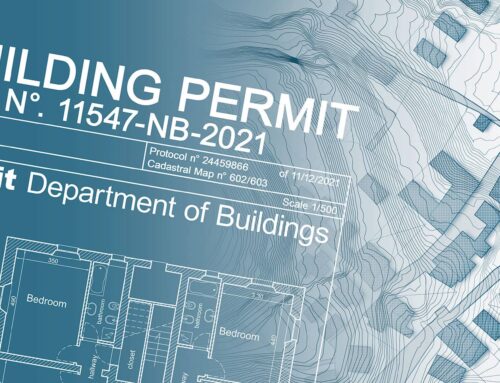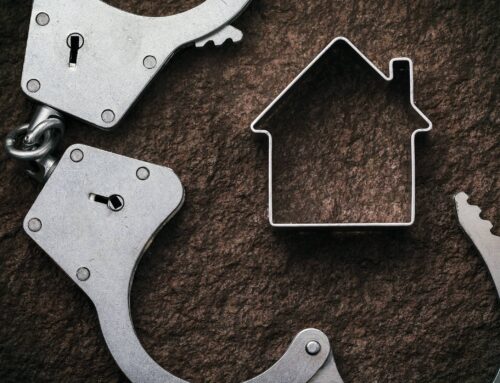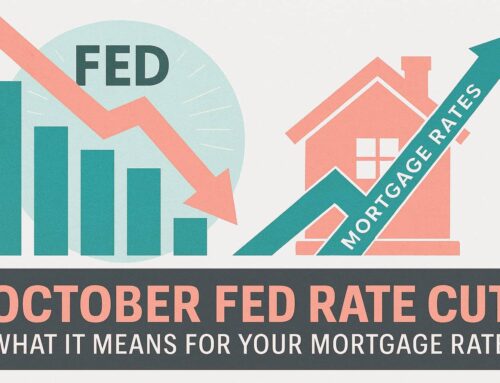
Why Your Drive to Work Could Shape Your Home’s Worth in Parker, CO
Parker, Colorado, is a rapidly growing Denver suburb known for its blend of small-town charm and modern suburban amenities. With a population of approximately 60,000 residents and housing values that outpace both statewide and national averages, the local real estate market increasingly attracts buyers who value quality of life, strong schools, and, critically, convenient commutes to Greater Denver employment centers. If you are interested in understanding the trade-offs and factors influencing Parker CO’s commute and home values, this analysis will address your concerns. In Parker, the interplay between commute patterns and residential property values is especially pronounced, shaped by average commute times, highway and public transit access, and proximity to major job hubs.
Key Takeaways
- Shorter, reliable commutes confer direct premiums to residential property values in Parker, CO.
- Accessibility to highways (E-470, Parker Rd, I-25), proximity to public transit (RTD Park-n-Ride, light rail), and walkability/connectivity to job centers are critical determinants of market value.
- Local and national data, GIS modeling, and real estate market trends consistently show that commute-related factors are among the top influences on home price appreciation and resilience.
- Policy and infrastructure investments that reduce traffic congestion, enhance public transit service, and promote mixed-use zoning will likely generate long-term increases in local property values.
- As remote/hybrid work patterns stabilize, the “sweet spot” for home value is shifting slightly, but commute times and access remain key priorities for Parker homebuyers and investors.
Parker, Colorado: Demographic and Economic Context
Socioeconomic Overview
Parker’s demographic and economic makeup provides important context for understanding real estate demand and commute preferences:
- Population: 60,115 (2023 estimate), up 2.4% year-over-year
- Median Age: 36.2 years
- Median Household Income: $129,342 (about 1.4 times the Colorado average)
- Homeownership Rate: 72.2%
- Median Home Value: $613,200 according to 2023 data, with other current sources citing median and average values between $652,000 and $700,000, demonstrating sustained appreciation 45.
- Median Rent: The median rent in Parker, CO, reflects the area’s strong housing market, with recent figures typically ranging from $2,200 to $2,500 per month.
- Poverty Rate: Low, at around 3.2%
- Largest Employment Sectors: Health care, professional services, and retail dominate, with a significant portion of the working population commuting to professional, managerial, and technical jobs in the Denver metro region.
Residential development is predominantly single-family detached housing, with newer construction and planned communities expanding Parker’s boundaries and adding to its transportation needs.
Geographic and Transportation Setting
Strategically located about 20 miles southeast of downtown Denver, Parker enjoys direct access to several major transportation corridors, including E-470 (a toll beltway), Parker Road (CO-83), and proximity to I-25, the Denver area’s primary north/south interstate. These elements, along with access to RTD bus services and Park-n-Ride links to regional light rail, shape both daily commute experiences and real estate market dynamics.
Compared to other major metros, Parker’s transportation access and commute patterns reflect a blend of suburban convenience and regional connectivity similar to what is observed in high-cost coastal metros and lower-cost inland metros.
Commute Patterns in Parker, CO
Average Commute Times and Modes
- Mean Commute Time: Estimates vary slightly by source, most consistently, Parker’s average commute is about 26.1 minutes, slightly shorter than the U.S. national average of 26.6 minutes, yet higher than the Colorado average of 25.5 minutes. Residents can expect commute times to generally fall within this range.
- Super Commutes: About 1.45% of Parker workers commute more than 90 minutes each way, a relatively small proportion numbered among the region’s “super commuters”.
- Commute Modes: The overwhelming majority, over 66%—drive alone. Another 6–7% carpool, and approximately 25% report working from home (a rise likely influenced by post-pandemic hybrid work trends). Public transit usage is notably low (about 1% of commuters), so residents can expect limited public transportation options and a strong reliance on personal vehicles or carpooling.
Commute Modality and Duration in Parker, CO (2023 Data)
| Commute Mode | Parker, CO (%) | U.S. Average (%) |
|---|---|---|
| Drove Alone | 66.3 | ~75 |
| Carpooled | 6.5 | ~8.9 |
| Public Transit | 1.0 | ~4.9 |
| Worked at Home | 24.5 | ~15 |
| Walked/Biked/Other | 2.2 | ~2.6 |
| Average Commute Time | 26.1 minutes | 26.6 minutes |
In Parker’s context, the prevalence of driving alone, combined with the rising share of remote work, suggests that many residents choose homes with an expectation of car-based commuting, but also value the flexibility of easy access to highways or transit as needed for hybrid work arrangements.
Correlating Commute Patterns to Home Values: National and Local Evidence
1. Commute Time and Property Values
Longer commutes tend to drag down home values—especially in suburbs like Parker. It’s a trend backed by national data and research, showing that commute times often signal deeper issues around affordability, access to jobs, and how neighborhoods are laid out. Buyers are paying attention.
- Regression Evidence: A landmark regression study of Texas suburban cities, analogous to Parker, found that each additional minute of average commuting time correlates to a decrease of $1.9 to $4.2 per square foot in median home price (p < 0.05), controlling for income and home characteristics. This can equate to tens of thousands of dollars in market value differences based solely on commute duration.
- Classical Urban Economic Models: In the monocentric city model used in real estate economics, housing prices decline with distance (and thus commute time) from the central business district. A Texas study estimated a decline of about 8% in home price per mile further from the CBD. The further the commute, the more buyers “compensate” by seeking lower housing costs—a pattern seen in Parker as Denver’s affordability challenges rise.
- National Survey Data: Studies leveraging the Panel Study of Income Dynamics and U.S. Census have found that homeowners with longer commute times often pay less per square foot for homes, consistent with the “drive-until-you-qualify” phenomenon (the tradeoff between affordable housing and increased commute burden).
2. Proximity to Highways and Major Roads
Access to major thoroughfares (provided it doesn’t result in excessive noise or pollution) tends to increase residential property values:
- Improved Accessibility: Homes with easy ingress/egress to E-470, I-25, or Parker Road are highly valued by commuters needing to reach downtown Denver, the Tech Center, or DIA efficiently. For example, communities such as Stonegate tout premium pricing and strong sales largely due to direct E-470 access, while neighborhoods with difficult highway access generally command lower prices.
- Market Reports: Real estate professionals emphasize that homes “near major highways can significantly cut down commute times for professionals working in the Denver metro area,” and buyers are willing to pay premiums for these locations. Conversely, homes directly adjacent to highways or high-traffic arterials may suffer value reductions due to perceived noise, safety, or pollution concerns.
3. Public Transit Access
National and local studies broadly indicate a positive association between public transit accessibility and higher property values, especially for properties within a half-mile of transit hubs.
- Empirical Data: Homes near high-frequency public transportation commonly outperform the market by over 40% in value retention, with the effect especially notable near stations or Park-n-Ride facilities. A study from the National Association of Realtors cites a 4–24% increase in median price for properties within 0.5 miles of transit, and a 15% premium in several large cities for properties within easy walking distance of a rapid transit stop.
- Applicability in Parker: While Parker has less robust transit infrastructure than central Denver, buyers often prioritize homes near Park-n-Rides, RTD bus links, or a short drive to light rail in Lone Tree or Centennial, supporting both current demand and future appreciation as the Denver metro area continues to invest in regional transit.
4. Proximity to Employment Centers
Homes that offer quick and reliable access to major job centers, such as downtown Denver, the Denver Tech Center, and the Airport, consistently achieve premium pricing:
- Professional Preference: High-income professionals, a core demographic in Parker, often seek neighborhoods that allow for sub-30-minute access to central Denver or the Tech Center. REALTORS® and local guides consistently cite “proximity to Denver and the Tech Center” as one of the top three drivers for real estate values in Parker.
- Labor Market Dynamics: With more than half the local labor force engaged in white-collar professions, short, reliable commutes add both practical and psychological value to real estate, influencing both purchase price and long-term appreciation potential.
Local Infrastructure: Patterns in Commute and Value
Spatial modeling tools and corridor planning reports provide further insight into the relationship between commute factors and real estate values in Parker. These data sources serve as the foundation for the analysis, supporting the evaluation of how different variables impact property values.
Corridors, Travel Times, and Infrastructure Quality
- Parker Road (CO-83): This corridor is critical, linking Parker to Aurora, southeast Denver, and—eventually—large swathes of the Denver suburbia and central employment clusters. A 2023 corridor conditions report finds average travel speeds range from 26 to 31 mph with AM and PM peak north/south commutes averaging just over 10 and 11 minutes within the corridor respectively. High congestion, unreliable travel times, and crash rates at major intersections reduce desirability and property values adjacent to bottlenecks, while areas with quick expressway access and recent improvements see premiums.
- E-470 Beltway: Fast toll access to DIA, DTC, and I-25 is a major selling point for homes on the eastern and northern sides of Parker. New master-planned developments and commercial sites along E-470 and Parker Road signal continued market confidence in these accessible nodes.
- Transit Infrastructure: Though public transit frequency is lower than in urban cores (bus service intervals of 30 minutes, light rail requiring a short drive), areas near express bus or Park-n-Ride options fetch higher prices, supporting evidence from metropolitan case studies.
- Pedestrian and Bicycle Infrastructure: Proximity to pedestrian facilities, bike trails (such as Cherry Creek Trail), and multi-modal hubs, especially when integrated with residential neighborhoods, is increasingly valued, especially among younger, sustainability-minded buyers, often supporting higher home values or faster appreciation.
GIS-Linked Home Value Modeling
Home value analysis using data from Redfin and Zillow shows:
- Median Sale Price Distribution: Redfin and Zillow both place the median Parker home value in the $650,000–$688,750 range for late 2025, up slightly year-over-year despite national and regional fluctuations. When the Parker housing market is compared to nearby cities and the national average, Parker’s home prices remain higher than many surrounding areas, reflecting strong demand and limited inventory. Neighborhoods closest to main commuter corridors and employment or shopping hubs (Reata North, Homestead Hills) rank among the most expensive, topping $850,000–$900,000.
- Neighborhood Value Gradients: In both Redfin and Zillow’s neighborhood metrics, price per square foot diminishes slightly as distance from highway interchanges and transit-ready zones increases, with larger step-downs observed for neighborhoods with indirect or congested routes to Denver or the commercial corridors.
- Walk Scores and Bikeability: Parker is rated 21/100 (car-dependent) for Walk Score and 44/100 (somewhat bikeable), with higher scores and property values concentrated near improved trailways, commercial cores, and parkland
A multi-factor table summary is provided below:
| Commute Factor | Description | Correlation with Home Values |
|---|---|---|
| Average Commute Time | 26.1 min (Parker); median U.S. 26.6 min; subareas: 15–29 min is modal | Longer commute → lower value; shorter is positive |
| Highway Proximity | Near E-470, Parker Rd, I-25 | Strong positive, unless too close (noise) |
| Transit Access | RTD bus, nearby Light Rail, Park-n-Ride, FlexRide | Positive, esp. within 0.5-mile radius |
| CBD/Employment Center Access | 20–40 min to DTC/Denver, 35–45 min to DIA | Premium for sub-30-minute routes |
| Public Transit Frequency | 1–2 routes, peak 30-min intervals on RTD | Slight premium; stronger if more frequent |
| Traffic Congestion | Corridor bottlenecks reduce accessibility | Negative; duration & unpredictability matter |
| Walk/Bike Infrastructure | More trails, connections to core amenities | Positive for specific buyer segments |
| Neighborhood Homogeneity | Stability in price band and demographic mix | Positively affects valuation consistency |
Local Real Estate Data: Commute and Market Trends
Market Summary (Late 2025)
- Median Sale Price: $652,000 (Redfin, Aug 2025), with average Parker home value at $686,865 (Zillow, Sept 2025). Year-over-year change is negative, but Parker remains a high-demand submarket with homes typically going under contract in 36–41 days.
- Sale-to-List Price Ratio: 99.4% in Parker (+0.9 point YoY), indicating that most homes sell at or just below list price, a sign of balanced but still competitive market conditions. The level of competition in the Parker real estate market remains high, with buyers needing to be prepared for a fast-moving environment. Homes in Parker often receive multiple offers, especially those that are well-priced or in desirable locations. “Hot” homes—especially those with quick commutes—can go pending in as little as 12 days.
- Migration Trends: Two-thirds of Parker buyers search for homes within the local region, with inbound migration from Dallas, Los Angeles, and Miami. Outflow is often to mountain/resort towns, reflecting the demographic’s above-average mobility and job flexibility.
- Commute as Decision Factor: According to Zillow’s buyer surveys, more than 50% of home shoppers list commute time as a “top priority”—not just for work location, but to be near family, schools, shopping, or outdoor recreation.
Price Gradients by Commute Zone
- Neighborhoods with Shorter Commutes/Better Access: Bell Cross Ranch, Homestead Hills, and areas near E-470 or Parker Road interchanges show sale prices consistently 10–20% higher than similar housing types more than 10–15 minutes further from primary commuter routes. These areas are also expected to see continued home price appreciation, which attracts both homeowners and investors anticipating future value growth.
- Zones Near Park-n-Ride/Transit Hubs: Moderate price premium observed, with single-family homes listing up to 7–12% above counterparts further from transit access. Townhome and condo premiums in these areas are even more pronounced, supporting investor interest in rental demand.
Impact of Remote Work
Although the pandemic spurred a temporary shift toward longer commute willingness in pursuit of home size and affordability, post-2021 data reveal a renewed emphasis on “manageable” commutes: hybrid workers now seek homes balancing space with commutability for at least several days per week, especially as major Denver employers dial back remote policies. Some buyers are still willing to accept longer commutes in exchange for more space at home, making additional living area a key factor in their decision-making. This has re-focused market demand—and thus pricing—toward Parker submarkets that offer the shortest and most reliable travel to Denver’s business districts.
Public Transit and Multimodal Access: Effects on Value
Current Public Transit in Parker
- RTD Bus Service: Local (“FlexRide”) and express commuter routes connect Parker to downtown Denver and the H Line/Lincoln Avenue light rail stations. The nearest RTD Light Rail access requires a short drive to Lone Tree or Centennial, connected by Route 483 and Route PD buses.
- Park-n-Ride Facilities: Located at Lincoln & Jordan and downtown Parker, these sites are hubs for both bus commuters and carpoolers.
- Walkability Improvements: Investments have been made in new sidewalks, multi-use trails, and bike paths (notably the Cherry Creek Trail), incrementally increasing non-car commuting in some neighborhoods.
Evidence for Value Enhancement
- Proximity Premium: Real estate literature and metro Denver studies suggest that homes within a short walk (about 0.25–0.5 miles) of transit nodes or active transportation corridors consistently achieve higher resale prices and experience lower turnover rates.
- Transit and Rental Market: Properties close to transit are especially competitive in Parker’s limited rental market, with lower vacancy rates and higher rent collection relative to comparable units not near bus lines or park-and-rides.
- Policy Implications: Town of Parker transportation plans highlight continued improvements in multi-modal connectivity as a mechanism for both community sustainability and sustained real estate growth.
Highway Access, Congestion, and Traffic Reliability
Major Corridors: E-470, I-25, Parker Road
- E-470: The E-470 toll beltway is a major asset, providing express access to DIA, I-25, and job centers across Southeast and North Denver. Parker’s northeast and southeast neighborhoods, with E-470 access, receive pricing premiums—not just for speed, but also travel reliability, which becomes critical as Denver’s congestion grows.
- Parker Road (CO-83): This arterial is the spine of local travel but features significant congestion points. Corridor improvements and planning to address AM/PM delays have a measurable impact on adjacent home desirability and market value, as evidenced by property price responses to LOS (Level of Service) upgrades or bottleneck alleviation.
Value Impact by Distance and Congestion
Real estate studies—and recent infrastructure planning—indicate that:
- Easy Highway Access: Properties with direct, uncongested highway ingress fetch up to 10–15% price premiums over equally sized and aged homes in comparable, less-accessible locations.
- Traffic Bottlenecks: High congestion, safety concerns (crash rates), and unpredictable travel times can subtract value, particularly for neighborhoods with poor alternatives or circuitous access to job centers.
Caveat: Properties directly abutting highways or high-traffic arteries may experience net negative effects from noise, air quality, and safety concerns, but the premium largely exists within a sweet spot—close, but not abutting the corridor.
Demographics, Socioeconomics, and Commute-Time Effects
Who Lives in Parker?
- Age and Family Structure: Parker is majority young families and professionals. About 30% are under 25, with a substantial share in career-prime years (25–64), and 10% over 65.
- Education and Income: Over 53% of residents hold a bachelor’s or higher; high median income and low poverty correlate to higher housing demand and often shorter, more expensive commutes (due to job centralization and upwardly mobile buyers).
- Race and Immigration: The community is 74–78% White (non-Hispanic), 5–6% Asian, and about 11% of mixed or other races, with a foreign-born share of 8–9%—comparable to the Denver metro region.
- Car Ownership: Nearly all households own two cars, reiterating the primacy of automotive commutes, especially for dual-income families.
Commute Time by Demographic: National Study Extrapolation
- Higher Income, Shorter Commute: A 2025 national study found that high-wealth households experience shorter commute times by up to 7–8% compared to those in lower quartiles. This pattern is visible in Parker’s relatively affluent, professional population choosing homes near prime commuter points. Some demographic groups opt for longer or shorter commutes based on the trade-off between housing affordability and job location.
- Racial and Economic Disparity: The negative impact of long commutes on housing value is more pronounced among racial minorities and lower-income groups—an issue for planners as affordability challenges push marginalized populations to more remote or transit-poor locales.
Policy, Planning, and Future Trends
Infrastructure, Zoning, and Community Planning
- Current Initiatives: Parker’s Town and County planning process emphasizes both road and transit improvement, aimed at alleviating bottlenecks (notably along Parker Road and E-470) and expanding bus/shuttle reach. Enhanced walkability and mixed-use zoning aim to create more “live-work-play” neighborhoods, boosting home values in zones seeing upgraded connectivity.
- Transit-Oriented Development (TOD): While Parker’s current development is predominantly auto-focused, there is movement toward higher density, mixed-use projects near transit, which national studies indicate could boost nearby home prices by as much as 24% long-term.
- Investment and Forecasts: Ongoing infrastructure investments (e.g., additional BRT/bus lanes, intersection upgrades, bike/pedestrian bridge proposals) are projected to both relieve traffic for existing residents and increase the appeal—and thus value—of new development parcels.
Market Outlook: The “New Normal” For Commutes
- Hybrid Work Impacts: Increased hybrid and remote work has shifted buyer preferences only marginally; while some tolerance for longer commutes rose during the pandemic, the return to in-office expectations has renewed price premiums for homes with the shortest and most reliable commutes.
- Affordability Pressures: As central Denver prices rise, more buyers “drive until they qualify,” seeking Parker for relative affordability despite somewhat longer commutes than inner-ring suburbs. However, those who can afford higher prices consistently choose neighborhoods that minimize daily travel.
- Demographic Shifts: Millennials and Gen Z prioritize not only commute convenience, but also walkability and access to lifestyle amenities, driving up value in Parker’s increasingly mixed-use and multi-modal neighborhoods.
Conclusion
Commute patterns exert a clear and measurable influence on residential home values in Parker, Colorado. Shorter commute times, easy access to major highways and transit, and connectivity to employment centers consistently result in higher home values. The strongest premiums exist within neighborhoods that strike a balance: proximity to, but not on top of, major highways; walkable/rideable access to transit nodes; and low local congestion.
Conversely, properties burdened by excessive commute times, unreliable travel corridors, or indirect access to key job hubs command lower prices and can be harder to sell, regardless of home size or features. As Parker continues to grow, the importance of integrated transportation planning—including highway, public transit, and active transportation infrastructure—will only increase, shaping both the experience and financial wellbeing of its residents.
For homeowners and buyers evaluating Parker, the data is unequivocal: commute characteristics should be a prime consideration, not an afterthought, in both property selection and valuation strategies. Strategic investment in transportation accessibility—whether personal, community, or policy-driven—directly translates to stronger, more resilient home values in this dynamic Denver suburb.







